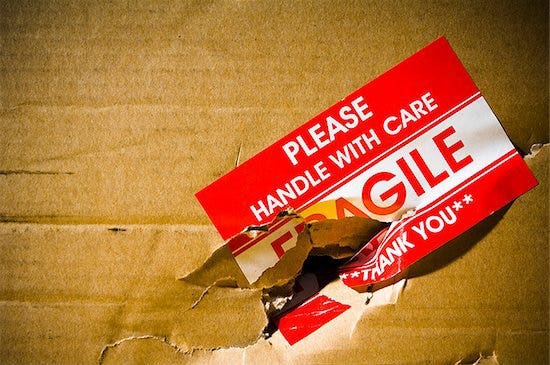From Abrasion to Breakage: Preventing Shipping Damage
admin admin | Jan 17, 2019

One of the primary concerns of shoppers when buying online is shipping. It’s a sad but nevertheless true reality: Shipping heightens the risk for all sorts of damage that can either devalue an item/product or render it useless. For businesses, this can lead to increased costs for shipping, repairs and replacements. On a personal level, this can lead to irreparable damage (sentimental value and family heirlooms come to mind).
Certain steps can be taken to prevent or reduce shipping/transportation-caused damage. Ideal for entrepreneurs, warehouse managers and for other people who frequently ship items, here are our tips on preventing shipping damage.
Abrasion, scuffs and scratches
Scuffs and scratches come about when items chafe or rub against other items, their product packaging containers or tougher surfaces. In general, stopping items from shifting during transport can prevent abrasion as we have discussed in our previous post. Here are some tips on avoiding abrasion damage:
-
Wrap the edges and surface of furniture with packaging supplies such as poly foam wrap, furniture wrap or furniture felt.
-
Use foam netting sleeves to protect bottles, fruits and other small items during transportation.
-
Secure items with void fillers like foam chips, packing peanuts and air pillows to stop them from shifting.
Warping/bursting
Containers with liquids can burst due to extreme temperature changes. In some cases, extreme temperatures can also warp and deform delicate items. Protect your shipment from temperature and humidity changes with the following tips:
-
Use wrapping papers to ward off moisture that can warp items or promote bacterial/fungal growth.
-
Bubble wrap can protect items from extreme temperatures by insulating them.
-
Silica gel packets absorb excess moisture when packed along with your shipment.
Shifting and instability
Pallets and items stacked together can tumble and fall during transportation. Frequently, land transportation’s nuances can create vibration that causes instability in pallets. Avoid instability by following these tips:
-
Secure pallets with properly tensioned stretch wrap.
-
Follow palletising pattern and height suggestions.
-
Polyester strapping can be used for strapping and lashing to secure loads.
Leaks and breakage
Extreme cases of physical damage and load instabilities can lead to leaks and breakage. Prevent extreme shipping damage by following these tips:
-
If possible, reduce opportunities and frequencies of damage by using air transportation instead of the lengthy land or sea-based transportation.
-
Improve shock absorption through the use of void fills, wrapping with bubble wrap, box-in-box shipping and other strategies.
-
Test your product packaging thoroughly before deploying it.
Interested in completing these essentials and more for your business? Browse through our shop now.







